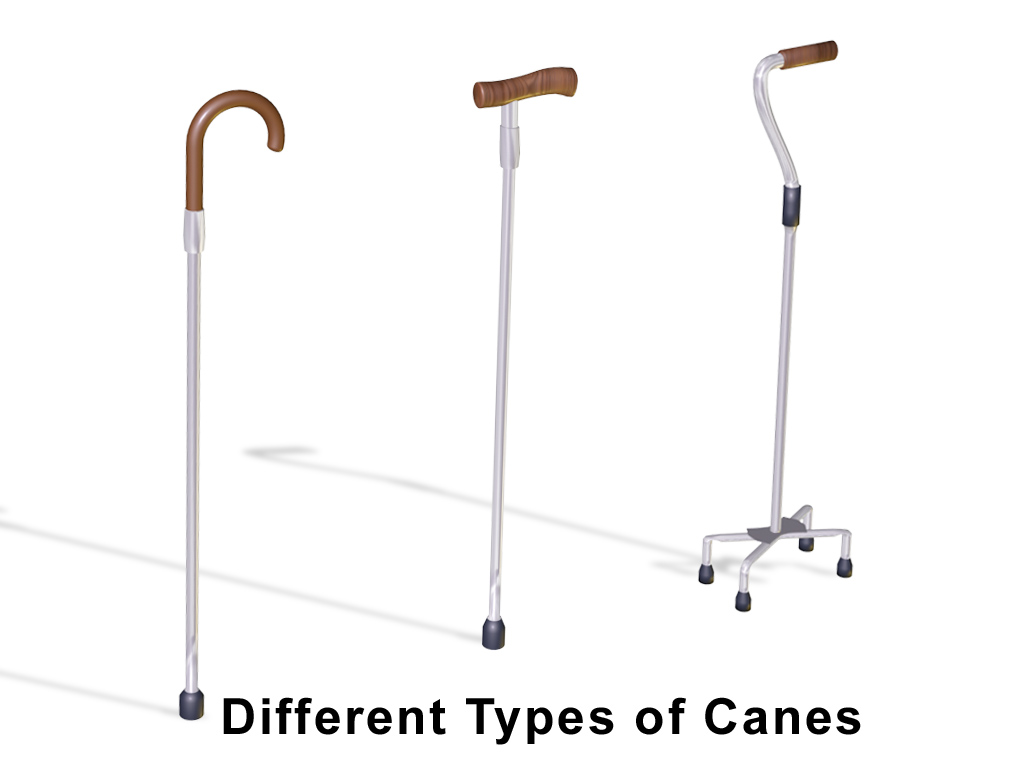What do you remember about Pixar’s famous movie, Up? Is it Doug, the golden retriever? The epic love story that brought tears to the most stoic of eyes? Whatever it is, it probably isn’t Carl’s cane, proudly decorated by four electric green tennis balls. I remember being amazed at how closely that represented the cane my grandfather used when he developed mobility issues—almost as if Pixar was using my experiences to shape their characters.
But when we think about animated characters with canes, we usually think about the classic “C” cane or a walking stick, notably on the arm of Ebenezer Scrooge. So how did canes get to where they are today? And how do they help our real-life patients?
The Smithsonian postulates that the concept of canes or “walking sticks” has been around since the first Homo sapiens would snap off tree branches to defend themselves [1]. Egyptian hieroglyphics from the 3rd century BC are thought to be the first instance of associating elderly people with the use of canes, followed by mention of canes as mobility devices in ancient Jewish texts and Greco-Roman writings from the 6th century AD [2]. The cane continued to be popular globally, with carved or decorated canes appearing throughout history in Africa, Asia and the Americas. Some historical canes had multiple uses, such as a bayonet-like cane with a retractable sword appearing in the 1800s [1].
The “standard cane” or “C cane” is modeled after a shepherd’s crook, a device curved at the handle to snag the leg of a runaway sheep. Today, this style is the lightest and most inexpensive cane—easily available at grocery stores and pharmacies. However, this model of cane puts the weight-bearing line (defined as a vector that carries the majority of the downward weight of the cane) behind the cane shaft, onto the wrist of the user. This can result in carpal tunnel syndrome for frequent users. To alleviate this, the “offset cane” provides a straight handle with a weight-bearing line on the cane shaft. This type of handle increases grip and stability, but, while also widely available and popular, is more expensive. Patients can also select a “quadripod cane”, which is the cane that our beloved Carl uses. This cane has the same handle as the offset cane, but features 4 branching legs at the bottom, often capped in rubber. This cane is highly stable and can stand upright on its own. Downsides include increased price and weight, which can overwhelm those with weaker upper body strength [3].

Apart from selecting the right cane, the most important factor for cane success is cane size and training. Recommending a cane for a patient assumes that the patient has sufficient upper body strength to support the extra offloaded weight. Canes can offload 10% of all body weight from the affected body part. They are best used for patients that have unilateral lower extremity weakness, such as those who suffered a stroke. Canes should be roughly as tall as the top of the wrist if the hand is at rest while standing and the user should have a 20 to 30 degree angle of the elbow while using the cane. Canes should always be used by the contralateral arm from the affected limb. Improper or inconsistent use of the cane can lead to falls [3].
Falls in the elderly continue to be the leading cause of fatal and nonfatal injuries in the older adult population [4]. In a 2015 study published in The Gerontological Society, 75% of elderly falls occurred while not using their prescribed mobility device and 100% of falls requiring surgical intervention occurred without the use of a mobility device. Furthermore, the study revealed that users were resistant to using canes and walkers due to forgetfulness, the cane making them feel old, or simply not understanding the proper use of the device [5].
Fortunately, companies are coming up with creative solutions for these problems. A 2019 article in Innovative Aging developed a smartwatch app that can accurately detect whether a person is walking with or without a cane [6]. While many may think, “how many older people are really out here wearing an Apple watch?”, smart technology use in the elderly continues to rise, with an overall positive reception towards smartwatch use [7]. Amazon has begun to sell canes with radios and flashing lights, though these have not been studied for efficacy or safety.
While the exciting cane technology is certainly promising, simple education about cane use can save the lives (and hips) of many of our elderly patients. Recognizing the need for mobility aids continues to be a vital part of our duty as physicians. So, the next time you see the quadripod on the arm of a patient, remember the impressive history, science, and safety behind the most popular mobility aid in America: the cane.
References:
1. Park, Edwards. “The Object at Hand.” Smithsonian Magazine, 1995.
2. Schäfer D, von Hülsen-Esch A, Fangerau H. Gehhilfen aus kulturgeschichtlicher Perspektive : Funktionelle und semantische Vielfalt von Assistenzsystemen für die Fortbewegung im Alter [Walking aids seen from a cultural historical perspective : Functional and semantic diversity of assistive systems facilitating locomotion in old age]. Z Gerontol Geriatr. 2019 Sep;52(Suppl 3):168-179. German. doi: 10.1007/s00391-019-01603-6. Epub 2019 Sep 13. PMID: 31520118.
3. Sehgal M, Jacobs J, Biggs WS. Mobility Assistive Device Use in Older Adults. Am Fam Physician. 2021 Jun 15;103(12):737-744. PMID: 34128609.
4. “Prevent Falls and Fractures.” National Institute on Aging, U.S. Department of Health and Human Services, 15 Mar. 2017, www.nia.nih.gov/health/prevent-falls-and-fractures.
5. Clare Luz, PhD, Tamara Bush, PhD, Xiaoxi Shen, MS, Do Canes or Walkers Make Any Difference? NonUse and Fall Injuries, The Gerontologist, Volume 57, Issue 2, 1 April 2017, Pages 211–218, https://doi-org.ezproxy3.library.arizona.edu/10.1093/geront/gnv096
6. Stephen A Antos, PT, DPT, Margaret K Danilovich, PT, DPT, PhD, Amy R Eisenstein, PhD, Keith E Gordon, PhD, Konrad P Kording, PhD, Smartwatches Can Detect Walker and Cane Use in Older Adults, Innovation in Aging, Volume 3, Issue 1, January 2019, igz008, https://doi-org.ezproxy3.library.arizona.edu/10.1093/geroni/igz008
7. Manini TM, Mendoza T, Battula M, et al. Perception of Older Adults Toward Smartwatch Technology for Assessing Pain and Related Patient-Reported Outcomes: Pilot Study. JMIR Mhealth Uhealth. 2019;7(3):e10044. Published 2019 Mar 26. doi:10.2196/10044
Megan Cadigan is a member of the University of Arizona College of Medicine - Phoenix Class of 2022. Born and raised in Albuquerque, NM, she moved to Arizona in 2014 to attend ASU, where she received her bachelor's degree in Neurobiology and Animal Behavior as well as a minor in Studio Art. She will be pursuing a residency in Family Medicine and looks forward to incorporating her love for art and the humanities into her future practice. Megan spends her free time reading, skiing, doodling, and reminding her cat, Olive, to stop meowing during zoom calls.


